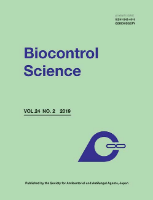
BIOCONTROL SCIENCE
Scope & Guideline
Innovating strategies for a sustainable and healthy environment.
Introduction
Aims and Scopes
- Biological Control Agents:
The journal extensively covers research on various biological agents, particularly microorganisms like bacteria and fungi, that can be utilized for pest and disease management in agriculture and other fields. - Microbial Ecology and Interactions:
A significant focus is on understanding the ecological interactions between microbial species and their environments, which is crucial for developing effective biocontrol strategies. - Innovative Detection and Characterization Techniques:
The use of advanced techniques such as MALDI-TOF MS and loop-mediated isothermal amplification for rapid detection and characterization of microbial species is a key area of research. - Antimicrobial Resistance and Mechanisms:
Research addressing antimicrobial resistance in various microbial strains is critical, as it informs the development of effective biocontrol agents and strategies. - Environmental Impact and Safety:
The journal emphasizes the importance of assessing the environmental impact and safety of biocontrol agents, ensuring that their application does not harm non-target species or ecosystems.
Trending and Emerging
- Nanotechnology in Biocontrol:
There is a growing interest in the application of nanotechnology, particularly the use of nanoparticles for microbial inactivation and environmental disinfection, showcasing innovative approaches to pest and disease management. - Sustainable Agricultural Practices:
Research focusing on sustainable methods of pest control and the integration of biocontrol agents into organic farming practices is increasingly prevalent, reflecting a global shift towards sustainable agriculture. - Impact of Climate Change on Microbial Dynamics:
Emerging studies are exploring how climate change affects microbial populations and their efficacy as biocontrol agents, indicating a need for adaptive strategies in pest management. - Synergistic Effects of Biocontrol Agents:
Research on the synergistic effects of combining different biocontrol agents is trending, as this can enhance efficacy and broaden the spectrum of control against various pests and pathogens. - Public Health and Safety Applications:
There is an increasing focus on the role of biocontrol agents in public health, including their application in disinfectants and decontamination protocols, especially in light of recent global health crises.
Declining or Waning
- Traditional Chemical Applications:
There has been a noticeable decrease in publications focused on traditional chemical pest control methods, as the journal increasingly emphasizes biological and environmentally friendly alternatives. - Generalized Antimicrobial Studies:
Research that lacks a specific focus on biocontrol applications or innovative methodologies is becoming less prominent, with more emphasis now placed on targeted studies that contribute directly to the field. - Historical Case Studies:
While historical case studies have their value, there is a waning interest in such studies unless they provide new insights or methodologies applicable to current biocontrol challenges.
Similar Journals
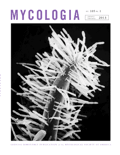
MYCOLOGIA
Unraveling the mysteries of mycology since 1945.MYCOLOGIA, published by Taylor & Francis Inc, is a prestigious journal that has been at the forefront of fungal research since its inception, with converging years of publication from 1945 to 2024. This interdisciplinary journal, identified by ISSN 0027-5514 and E-ISSN 1557-2536, stands out in various scientific categories, achieving Q1 rankings in Ecology, Evolution, Behavior and Systematics, as well as Plant Science, alongside strong performances in Cell Biology and Molecular Biology categories. With an impact factor that reflects its significance in the field, MYCOLOGIA appeals to a diverse audience, including researchers, professionals, and students dedicated to advancing the understanding of fungal biology and its ecological implications. Notably, while it does not currently operate under an Open Access model, the journal remains a vital resource for those pursuing groundbreaking discoveries in mycology and related disciplines.

NEMATOLOGY
Illuminating the Impact of Nematodes on EcosystemsNematology is a prominent journal published by BRILL, focusing exclusively on the multifaceted realm of nematodes and their ecological, agricultural, and biological implications. With an ISSN of 1388-5545, this esteemed journal serves as a vital platform for researchers, professionals, and students dedicated to advancing knowledge in Agronomy and Crop Science and Ecology, Evolution, Behavior, and Systematics. Established in 1999 and continuing its mission until 2024, Nematology holds a Q2 ranking in Agronomy and Crop Science and a Q3 ranking in Ecology as of 2023, indicating its significant impact within these fields. Published in the Netherlands, this journal is accessible through various options, providing vital insights into nematological research and its applications. Researchers from around the globe are encouraged to explore, submit manuscripts, and contribute to the evolving discourse within this specialized yet pivotal area of study.
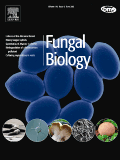
Fungal Biology
Unlocking the Secrets of Fungi for a Sustainable FutureFungal Biology, published by Elsevier Science Ltd, is a premier journal dedicated to advancing the field of mycology and its interdisciplinary applications. With an ISSN of 1878-6146 and E-ISSN 1878-6162, this journal serves as a vital platform for researchers and professionals interested in the ecological, evolutionary, and genetic aspects of fungi, as well as their implications in infectious diseases and plant sciences. As of 2023, it proudly holds a Q2 ranking in Ecology, Evolution, Behavior and Systematics and Plant Science, and a Q3 ranking in Genetics and Infectious Diseases, highlighting its significant contribution to these domains. The journal boasts an impressive Scopus rank, including a percentile of 83rd in Ecological studies, ensuring that published research reaches a wide audience and impacts ongoing discourse in the field. With open access options, Fungal Biology encourages the dissemination of high-quality research, aimed to foster collaboration and innovation among scholars and practitioners. With its convergence of knowledge from 2010 to 2024, this journal is instrumental for those advancing the understanding of fungal biology and its myriad applications in environmental and health sciences.
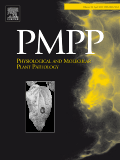
PHYSIOLOGICAL AND MOLECULAR PLANT PATHOLOGY
Illuminating the complexities of plant pathology through rigorous research.Physiological and Molecular Plant Pathology is a leading journal published by Academic Press Ltd - Elsevier Science Ltd, dedicated to advancing our understanding of plant diseases through the synthesis of physiological and molecular perspectives. With an ISSN of 0885-5765, this esteemed journal has been a cornerstone in the field since its inception in 1986 and continues to publish critical research findings up to 2024. Notably, it holds a strong reputation in Plant Science, ranked Q2, and genetics, ranked Q3, reflecting its impactful contributions to these important areas of study. The journal is recognized within Scopus, achieving a ranking of 151 out of 516 in Plant Science, positioning it within the 70th percentile, making it a vital resource for researchers and students alike. While it is not an open-access journal, the insights provided in each issue are invaluable for those dedicated to understanding the complexities of plant pathology and enhancing agricultural resilience. Researchers, professionals, and students in the field are encouraged to explore and contribute to this pivotal journal, which plays a crucial role in driving innovation and discovery in plant health sciences.
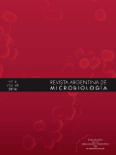
REVISTA ARGENTINA DE MICROBIOLOGIA
Connecting experts to foster innovative microbiological insights.REVISTA ARGENTINA DE MICROBIOLOGIA, published by the ASOCIACION ARGENTINA MICROBIOLOGIA, stands as a prominent open-access journal in the field of microbiology and medicine since its establishment in 1979. With an ISSN of 0325-7541 and an E-ISSN of 1851-7617, this journal has paved the way for disseminating high-quality research while enhancing accessibility for academics and practitioners worldwide. The journal has achieved notable rankings, being classified in Q3 for Medicine (miscellaneous) and Q3 for Medical Microbiology in 2023, reflecting its commitment to advancing knowledge in these critical areas. Despite its relatively modest impact factors, it occupies a vital niche in the academic landscape, fostering collaborations and innovative research among experts. With Open Access available since 2013, REVISTA ARGENTINA DE MICROBIOLOGIA not only facilitates widespread distribution of valuable scientific information but also empowers researchers, professionals, and students to stay abreast of the latest findings and developments in microbiology. For those engaged in the evolving realm of microbiology, this journal serves as an essential resource for sharing insights and advancing the scientific community.
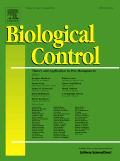
BIOLOGICAL CONTROL
Exploring the Future of Agronomy and Insect ScienceBIOLOGICAL CONTROL, published by Academic Press Inc Elsevier Science, is a prestigious journal focusing on the advancement of knowledge in the field of biological pest control and integrated pest management. With a high-impact factor reflecting its significant contributions to agronomy and insect science, it has secured elite positions in both Q1 categories as of 2023. The journal ranks within the top 6% and 12% of its fields on Scopus, making it an essential resource for researchers and professionals dedicated to sustainable agricultural practices and ecological balance. With its comprehensive exploration of theoretical and applied studies from 1991 to 2024, BIOLOGICAL CONTROL serves as a critical platform for disseminating innovative research and promoting dialogue among scholars, students, and practitioners. Although the journal follows a subscription-based access model, it consistently attracts contributions that shape the future of pest management strategies.

TURKIYE ENTOMOLOJI DERGISI-TURKISH JOURNAL OF ENTOMOLOGY
Bridging Science and Nature through Insect StudiesTURKIYE ENTOMOLOJI DERGISI - TURKISH JOURNAL OF ENTOMOLOGY is a distinguished journal published by the Entomological Society of Turkey in collaboration with Ege University, dedicated to advancing the field of insect sciences. With an ISSN of 1010-6960 and E-ISSN 2536-491X, this journal plays a pivotal role in disseminating groundbreaking research in entomology, particularly focusing on the diverse aspects of insect biology, ecology, and their applications in agriculture. As a member of the Q3 category in Insect Science according to the 2023 quartiles, it ranks in the 40th percentile of its field, indicating its growing influence and importance within the scientific community. The journal's scope encompasses innovative research findings, reviews, and short communications that contribute to the understanding and management of insect species. While not currently open access, it serves as a vital resource for researchers, professionals, and students seeking to stay informed about the latest developments in entomology from Turkey and beyond, with a commitment to maintaining high scholarly standards through rigorous peer review processes.

Rhizosphere
Connecting Science and Soil for Agricultural InnovationRhizosphere is a prestigious journal published by Elsevier that focuses on the integrative study of the soil-root interface and its immense implications in agronomy, crop science, and soil science. With an impressive track record since its inception in 2016, this journal stands out as a key resource in the field, achieving a Q1 ranking in three critical categories: Agronomy and Crop Science, Plant Science, and Soil Science as of 2023. The journal's impact is underscored by its ranks in Scopus, where it places within the top tiers of its fields—#72/406 in Agronomy and Crop Science, #92/516 in Plant Science, and #38/159 in Soil Science. Rigorous peer review and a commitment to open discourse make Rhizosphere an essential platform for researchers, professionals, and students who seek to advance their understanding of plant interactions with soil ecosystems. With accessible content options, the journal contributes significantly to advancing knowledge and innovation within the global scientific community.
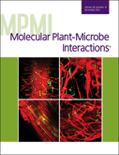
MOLECULAR PLANT-MICROBE INTERACTIONS
Unraveling the Secrets of Symbiosis for Sustainable AgricultureMOLECULAR PLANT-MICROBE INTERACTIONS is a premier journal dedicated to the exploration of the complex interactions between plants and microbes, providing a vital platform for researchers in agronomy, crop science, and plant physiology. Published by the American Phytopathological Society, this journal has been serving the academic community since 1988 and continues to be at the forefront of advances in molecular biology and plant-microbe symbiosis, with a notable impact factor reflecting its esteemed position in the field. As a Q1 journal in both Agronomy and Crop Science and Medicine (miscellaneous), and holding a significant ranking in the Scopus categories, it is recognized for publishing high-quality, peer-reviewed research that is essential for understanding and improving agricultural practices. Although it is not an open-access journal, it provides critical insights that facilitate collaborative efforts among researchers, professionals, and students alike. The journal’s objectives focus on enhancing our understanding of plant health, disease resistance, and ecological sustainability, making it a crucial resource for anyone interested in the intricate research landscape of plant-microbe dynamics.
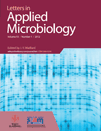
LETTERS IN APPLIED MICROBIOLOGY
Connecting Experts Through Groundbreaking Microbial StudiesLETTERS IN APPLIED MICROBIOLOGY, published by OXFORD UNIVERSITY PRESS, is a prominent journal in the field of applied microbiology, serving as an essential platform for researchers and professionals to disseminate innovative findings. With an ISSN of 0266-8254 and an E-ISSN of 1472-765X, this peer-reviewed journal has been contributing to the scientific community since 1985 and continues to engage with cutting-edge research through 2024. With its current Scopus ranking placing it in the 45th percentile of its category, specifically at rank #70 out of 127 in the Applied Microbiology and Biotechnology field, it underscores its significance in advancing knowledge and applications pertinent to microbial science. Although it is not open access, LETTERS IN APPLIED MICROBIOLOGY offers comprehensive insights aimed at enhancing the understanding of microbiological phenomena in practical scenarios, making it a valuable resource for both seasoned experts and emerging scholars.